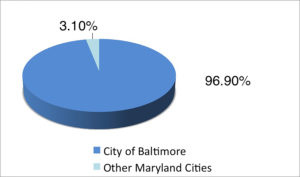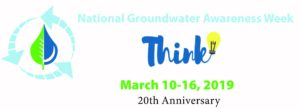Is Your Maryland Water Contaminated?
The subject of water contamination in municipal, also known as city water, has been a continuing top news story. Considering the lead contamination in Flint, Michigan and the chemical spill in West Virginia, both in 2014, the health of our drinking water is a serious concern.
The magazine for Water Quality Products, an industry leader in water treatment trends, recently published the results of a water analysis study conducted by FluksAqua for the state of Maryland. The study looked at the area’s municipal water. Alarmingly, Maryland has the most violations of any of the 9 states with violations (Arkansas, Iowa, Kentucky, Louisiana, Ohio, Oklahoma, Texas, West Virginia)—31% of the population is affected.
The states not represented in the graphic above reported less than 10% of the population was affected by health-based violations in either 2015 or 2016.
5 Health-Based Violations
FluksAqua focused its analysis on five health-based violations. The violations include:
- Coliforms: A type of bacteria found in feces. By themselves, they are not always harmful but they are associated with other disease-causing bacteria.
- Nitrates: Nitrogen-oxygen compounds commonly found in fertilizers. When ingested or absorbed into the bloodstream, they can interfere with the blood’s ability to carry oxygen, especially in children.
- Arsenic: Tasteless and odorless, it is a semi-metal element found naturally in the earth.
- Radionuclides: Unstable atoms which emit radiation energy. Long-term exposure is associated with an increased risk of cancer.
- Disinfection by-products: Chemical compounds generated when a disinfectant reacts with naturally-occurring materials in water. There are four types: Total Trihalomethanes (TTHMs), Haloacetic Acids (HAA5), Bromate and Chlorite. Long-term exposure is associated with cancer or nervous system problems.
Notably, there has been a decrease since 2015 of the Maryland population affected by
contaminants in their water from 32.62% in 2015 to 31.13% in 2016. This is a positive trend but there are still over 1.6 million residents affected.
Locations With Maryland Water Violations
Decrease In Water Violations From 2015 to 2016
| State | Pop. Affected 2015 | Pop. Affected 2016 | Difference |
| Maryland | 32.62% | 31.13% | -4.57% |
What Can You Do?
Most of the Maryland water violations occurred in the City of Baltimore, while the remaining 3.1% of violations occurred in smaller communities throughout the state. Unlike homes with well systems, city residents rely on municipal water and have little to no control over the quality of water delivered to their home.
The best options for city water residents are water filtration systems, either for the whole home or exclusive to drinking water. A reverse osmosis system is relatively simple appliance that can provide clean drinking water at the tap. A water cooler, like the bottle-less coolers from Wellsys, is another great option for on-demand hot or cold drinking water. Contact your local water treatment company to determine the best solution for your family’s needs.
Regardless of the water filtration you select, it is crucial to stay informed about the water quality in your home. Oftentimes, water treatment companies that offer a free water analysis or more detailed water tests for a fee. Regular testing will give you piece of mind about the water in your home. More information about water quality can also be found in your local Consumer Confidence Report.
Source: FluksAqua. http://www.wqpmag.com/localized-analysis-reveals-city-level-drinking-water-violations?eid=216784638&bid=1688416





